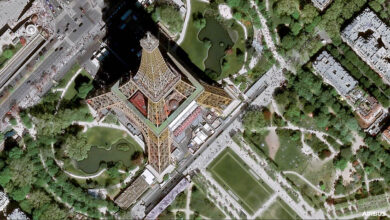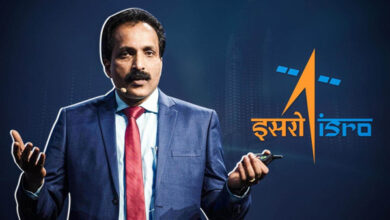Solar mission Aditya L1 continuously sending data about Sun: S. Somanath
By R. Anil Kumar
“We are looking into the sun in a continuous manner – UV magnetic charges observation, corona graph observation, X-ray observation and other things.”: ISRO Chief said
Our mission is also collecting data about the sun before, during and after an eclipse: Somanath
India’s first solar mission craft, Aditya-L1 spacecraft was launched on September 2, 2023
The satellite will be operational for five years, the observation will be analysed as a long-term measure: ISRO Chief
Bengaluru, April 21. ISRO Chief S. Somnath on April 21, said that the Aditya L1 solar mission of the premier space research agency is continuously sending data about the Sun.

Somnath, who was speaking to reporters after being conferred a special award by jewellery major P C Chandra Group, said several instruments of the spacecraft are working continuously to feed data on many aspects.
“We are looking into the sun in a continuous manner – UV magnetic charges observation, corona graph observation, X-ray observation and other things,” he said.
India’s first solar mission craft, Aditya-L1 spacecraft was launched on September 2, 2023.
“As we are keeping this satellite for five years, the observation will be analysed as a long-term measure. It is not like your instant news that something has been reported about the sun today, something else will happen tomorrow, things will happen every day,” he explained.
All observations will happen now but the results will be known later, he said.
“Eclipse happens as the sun is blocked by the moon. It is not like that anything happens within the sun during an eclipse. But obviously, our mission is also collecting data about the sun before, during and after an eclipse, Somnath said, while answering a question on whether the mission will throw light on the solar eclipse.
Speaking about collaborations with other space agencies, he said ISRO is building a joint satellite NISAR (NASA-ISRO Synthetic Aperture Radar).
ADITYA-L1 Mission Details


Aditya-L1 is a satellite dedicated to the comprehensive study of the Sun. It has 7 distinct payloads developed, all developed indigenously. Five by ISRO and two by Indian academic institutes in collaboration with ISRO.
Aditya in Sanskrit means the Sun. L1 here refers to Lagrange Point 1 of the Sun-Earth system. For common understanding, L1 is a location in space where the gravitational forces of two celestial bodies, such as the Sun and Earth, are in equilibrium. This allows an object placed there to remain relatively stable with respect to both celestial bodies.
Quick Facts:
Aditya-L1 will stay approximately 1.5 million km away from Earth, directed towards the Sun, which is about 1% of the Earth-Sun distance. The Sun is a giant sphere of gas and Aditya-L1 would study the outer atmosphere of the Sun. Aditya-L1 will neither land on the Sun nor approach the Sun any closer.
Halo-Orbit Insertion (HOI) of its solar observatory spacecraft, Aditya-L1 was accomplished at 16.00 Hrs (approximately) on January 6, 2024 (IST).
The orbit of Aditya-L1 spacecraft is a periodic Halo orbit which is located roughly 1.5 million km from earth on the continuously moving Sun – Earth line with an orbital period of about 177.86 earth days.
This Halo orbit is a periodic, three-dimensional orbit at L1 involving Sun, Earth and a spacecraft. This specific halo orbit is selected to ensure a mission lifetime of 5 years, minimising station-keeping manoeuvres and thus fuel consumption and ensuring a continuous, unobstructed view of sun.
The Aditya-L1 mission is an Indian solar observatory at Lagrangian point L1 for “Observing and understanding the chromospheric and coronal dynamics of the Sun” in a continuous manner. Placing the Aditya-L1 in a halo orbit around L1 point has advantages as compared to placing in a Low Earth Orbit (LEO):
It provides a smooth Sun-spacecraft velocity change throughout the orbit, appropriate for helioseismology.
It is outside of the magnetosphere of Earth, thus suitable for the “in situ” sampling of the solar wind and particles.
It allows unobstructed, continuous observation of the Sun, and view of earth for enabling continuous communication to ground stations.
Halo orbit insertion
The insertion of Aditya-L1 into this Halo orbit presents a critical mission phase, which demanded precise navigation and control. A successful insertion further involved constant monitoring along with the adjustment of the spacecraft’s speed and position by using onboard thrusters. The success of this insertion not only signifies ISRO’s capabilities in such complex orbital manoeuvres, but it gives confidence to handle future interplanetary missions.
Aditya-L1 was designed and realised at UR Rao Satellite Centre (URSC) with participation from various ISRO centres. The payloads onboard Aditya-L1 were developed by Indian scientific laboratories, IIA, IUCAA and ISRO.
The Aditya-L1 spacecraft was launched by PLSV-C57 on September 2, 2023 from SDSC SHAR, into an elliptical parking orbit (EPO) of 235.6 km by 19502.7 km. From here, Aditya-L1 embarked on an extraordinary journey towards the Sun-Earth-L1 Lagrange point, with the help of the onboard propulsion system, increased its orbital size progressively and moved toward L1 point.
Five liquid engine burns (LEB) were executed during Earth orbit phase; gradually raised the apogee of the EPO in order to attain the desired trajectory with the fifth burn, known as the trans-L1 injection (TL1I) manoeuvre.
The spacecraft underwent a cruise phase lasting approximately 110 days to achieve the present condition prior to HOI targeted for January 6, 2024.
All the payloads were tested during the pre-commissioning phase and performance of all the payload is confirmed to be satisfactory.

Halo Orbit Insertion in L1 Rotating Frame
The picture shows the Halo orbit insertion process graphically in a two dimension picture. The Aditya-L1 spacecraft was moving from Earth towards the L1 point in the direction of Sun.





